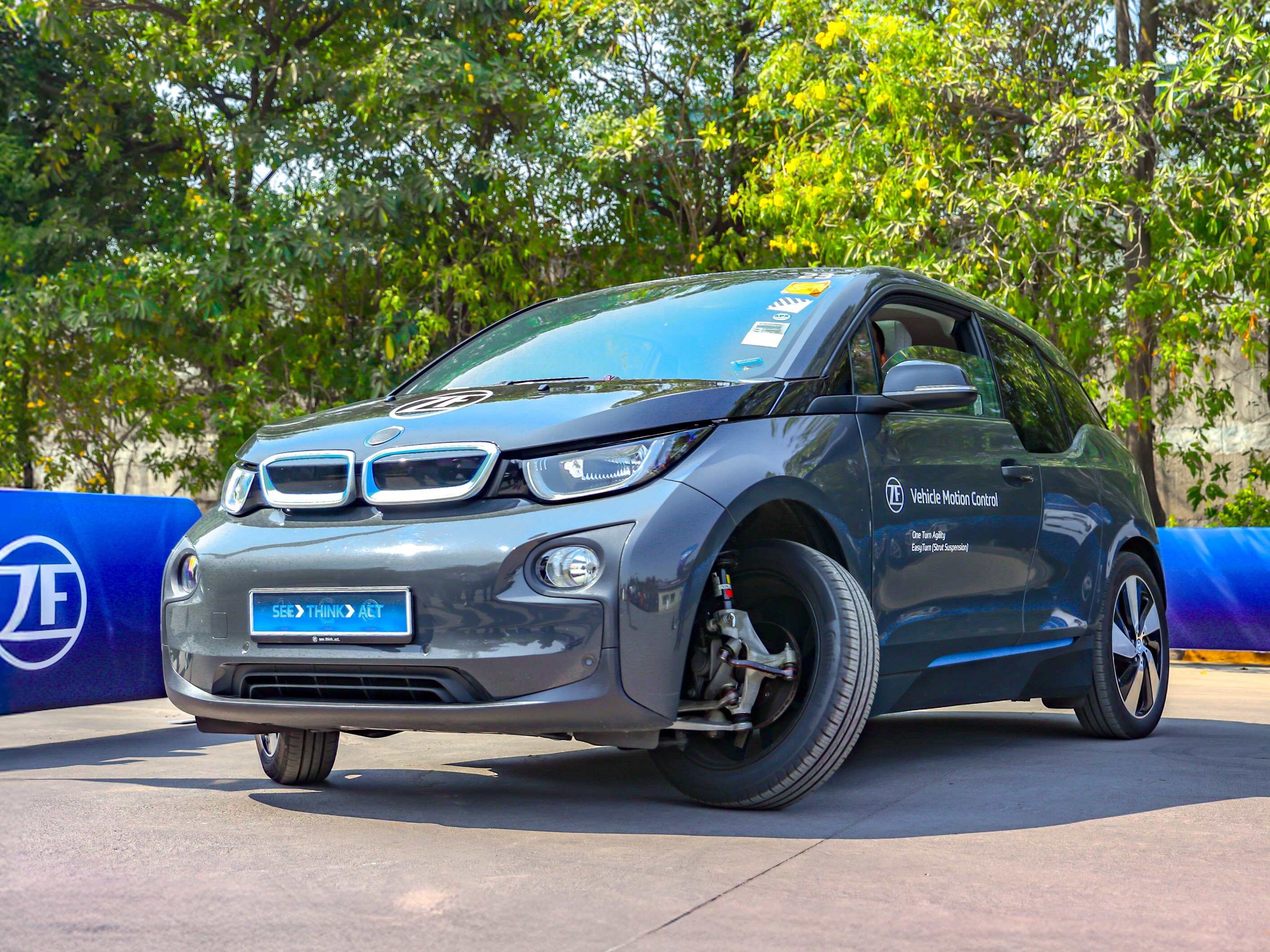ZF EasyTurn: Making tight turns a cinch!
ZF has introduced its innovative EasyTurn technology that might change the way we drive in tight spaces
 ZF has introduced its innovative EasyTurn technology that might change the way we drive in tight spaces
ZF has introduced its innovative EasyTurn technology that might change the way we drive in tight spacesYou may be familiar with ZF, a technology company that supplies products and systems for passenger cars. It may be more well known for its gearboxes in luxury cars, but ZF also works on other engineering and mobility solutions. Recently, we were invited to ZF’s plant in Chakan to check out their latest innovation called ‘EasyTurn’ strut suspension.
 The ZF EasyTurn strut suspension is based on the McPherson strut suspension that we find in most cars, with two extra links increasing the steering angle
The ZF EasyTurn strut suspension is based on the McPherson strut suspension that we find in most cars, with two extra links increasing the steering angleWhat is ZF EasyTurn?
ZF EasyTurn is based on the McPherson strut suspension which is found at the front of most cars that we drive. It basically consists of two links which are made of standard mechanical components, to increase the inner wheel steering angle of a vehicle up to 80-degrees – provided there is enough space in the front wheel well of the vehicle to accommodate such a steering angle. The use case of ZF EasyTurn is to provide improved manoeuvrability at low speeds, particularly for driving in the city or for parking in tight spaces.
ZF says that the application of EasyTurn is most beneficial to rear-wheel-drive vehicles, particularly in EV form, or commercial vehicles which are rear-wheel driven – not FWD vehicles, which a majority of the masses continue to drive. ZF claims that with EasyTurn, there is a 30 per cent reduction in the turning circle radius, so a vehicle with a turning circle of 10m would theoretically reduce to 7m with the application of EasyTurn. The steering angle also depends on the thickness of the tyres used in the particular vehicle.
Behind the wheel with the ZF EasyTurn
We got to sample the ZF EasyTurn strut suspension on a BMW i3 EV, and we drove the car in a 8x8m section at the ZF Chakan facility. The i3 negotiated the tightest of turns inside the marked section without any hassle, without requiring a three-point turn and it was quite amusing to see the electric hatchback negotiate this manoeuvre. Check out a video of the EasyTurn in action on our Instagram handle. Mind you, the i3 already comes with rear-wheel-steering as standard, which only aided the hatchback to take these tight turns. We also drove the i3 for a short distance before negotiating U-turns, and while a driver’s instinct would mean that we did take a wider line before the turn-in, the i3 with EasyTurn negotiated these U-turns very tightly, akin to turning around on its own axis. ZF had also hooked up a tablet to the interior of the BMW i3 which showed us the steering wheel angle of the i3 in real time.
The EasyTurn strut suspension by ZF is an innovative solution for vehicles, particularly in metro cities which require cars to be more manoeuvrable when driving in traffic or even during parking. And while the idea is brilliantly executed, it might be a while before this feature or similar technologies become mainstream in cars driven by the masses, as most carmakers continue to stick to the front-wheel-drive layout for its cost benefits. That said, we would love to drive more cars that can ‘turn on a dime’ and make it easier for us on regular commutes, with EasyTurn’s added convenience proving to be a boon in our cities.


